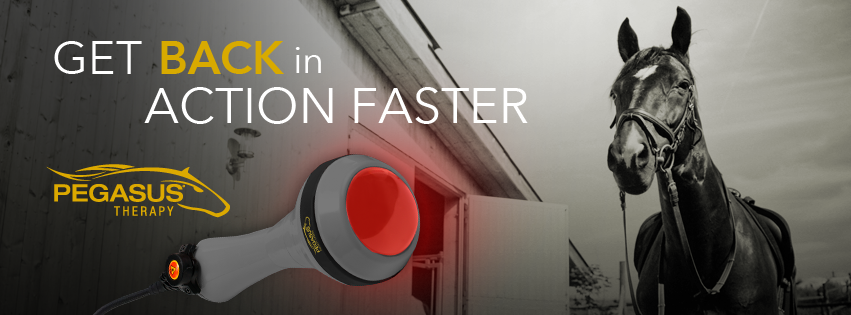Why Equine Therapy is Coming To Be a Preferred Alternative for Emotional Health
Why Equine Therapy is Coming To Be a Preferred Alternative for Emotional Health
Blog Article
Reviewing the Effectiveness of Laser Treatment in Horse Treatment for Injury Rehab
The assessment of laser therapy's efficiency in equine injury rehab depends upon numerous factors, consisting of recovery time, discomfort reduction, and tissue regeneration. Clinical studies suggest notable enhancements in problems like tendonitis and osteoarthritis, credited to enhanced cellular feature and raised ATP production. Veterinarians often observe exceptional results with laser therapy compared to conventional approaches, placing it as a critical component in equine care. The necessity for continual monitoring and customized therapy plans can not be overstated. What specific scientific evidence sustains these claims, and just how do vets implement these procedures in method?
Recognizing Laser Therapy
Laser therapy has actually come to be a pivotal device in veterinary medicine, especially in the treatment of equine problems. Recognized for its non-invasive nature and efficiency, laser therapy entails the application of particular wavelengths of light to promote cells fixing and lower inflammation. This restorative modality is significantly favored for its ability to accelerate the recovery process in equines experiencing a selection of musculoskeletal injuries and persistent conditions.
The primary mechanism behind laser treatment is its capability to enhance mobile functions. Furthermore, laser therapy advertises vasodilation, boosting blood circulation and oxygen delivery to damaged cells, hence quickening recuperation.
In equine medicine, laser treatment is specifically beneficial for conditions such as tendonitis, osteo arthritis, and wound healing. The strategy is admired for its pain-relieving buildings, allowing steeds to gain back wheelchair and function a lot more quickly. Veterinarians likewise appreciate its marginal side results contrasted to various other treatment modalities, making it a reputable and secure choice for equine treatment.

Exactly How Laser Treatment Works

Upon absorption, these photons cause a series of biochemical modifications, improving mitochondrial feature and bring about increased adenosine triphosphate (ATP) production. This rise in ATP speeds up mobile metabolic rate, promoting cells fixing and regrowth. In addition, laser treatment regulates inflammatory feedbacks by affecting cytokine levels and reducing oxidative anxiety, thereby relieving discomfort and swelling.
One more considerable element of laser treatment is its role in improving microcirculation. The treatment advertises vasodilation, enhancing blood flow and oxygen distribution to broken tissues (Equine Therapy). This assists in the elimination of cellular debris and supports the spreading of fibroblasts and collagen synthesis, essential for injury healing
Medical Proof
The efficacy of laser treatment in equine therapy has been validated with different clinical researches, showcasing its restorative potential throughout a range of problems. A study carried out by Turner et al. (2012) showed that steeds treated with low-level laser treatment (LLLT) for ligament injuries exhibited increased healing contrasted to those getting conventional treatments.
Likewise, research study by Johnson and colleagues (2015) concentrated on equine muscle mass injuries, revealing that laser treatment considerably quickened muscular learn this here now tissue fiber regeneration and minimized muscular tissue tightness. These findings were proven by histological analyses revealing improved muscle tissue organization. Furthermore, medical assessments have actually revealed that laser treatment can alleviate persistent problems such as osteoarthritis. A study by Smith et al. (2018) reported that steeds with osteoarthritic joints experienced noteworthy pain relief and boosted array of movement adhering to a regimen of laser therapy sessions.
Veterinarian Insights

Veterinarians also value the convenience of laser treatment. It can be utilized for a large range of conditions, from surface injuries to much deeper musculoskeletal injuries. Dr. Emily Brown highlights its energy in treating problems like tendonitis and osteo arthritis, where traditional therapies commonly drop short. She mentions that laser treatment can be tailored to the specific requirements of each horse, making certain optimal results.
Furthermore, veterinarians value the capacity to incorporate laser therapy with various other therapy modalities. This multimodal strategy can boost overall therapy effectiveness, supplying an extensive remedy for equine rehab. Such endorsements from experienced specialists highlight the growing approval and application of laser therapy in equine medication.
Practical Factors To Consider
A crucial aspect of implementing laser treatment in equine therapy includes understanding the functional considerations that guarantee its effectiveness and security. Most importantly, it is critical to pick the ideal laser tool, as numerous types vary in view wavelength, power, and infiltration deepness. Equine Therapy. Veterinarians must be skilled in these parameters to customize treatment protocols efficiently to every injury type
Moreover, the regularity and duration of laser therapy sessions require mindful preparation to make the most of therapeutic advantages while reducing any prospective negative impacts. Regular monitoring of the equine's action to treatment can guide needed modifications in the treatment regimen. Developing a safe and controlled environment during therapies is likewise vital to prevent accidental exposure to laser emissions, which can hurt both the steed and the handler.
Educating and accreditation of employees administering laser treatment are critical to make sure appropriate strategy and to support safety and security standards. In addition, maintaining precise documents of each session, including laser settings and observed outcomes, is important for examining the total effectiveness of the treatment and for making data-driven decisions.
Final Thought
Laser therapy has become an effective modality in equine injury recovery, using significant advantages in healing time, pain alleviation, and cells recovery. Scientific research studies highlight significant renovations in problems such as tendonitis and osteo arthritis, connected to boosted mobile function and increased ATP production. Vet monitorings substantiate these findings, highlighting superior end results contrasted to typical treatments. For optimum outcomes, continuous surveillance and personalized treatment protocols remain essential in leveraging the complete potential of laser treatment in equine care.
Report this page